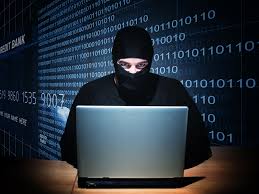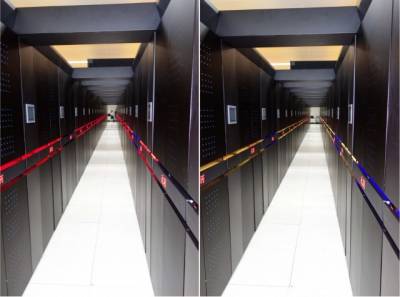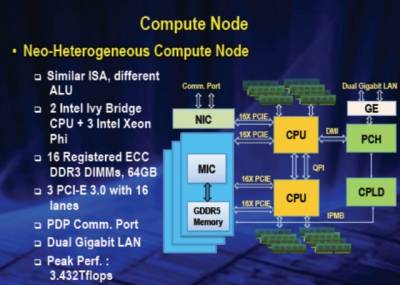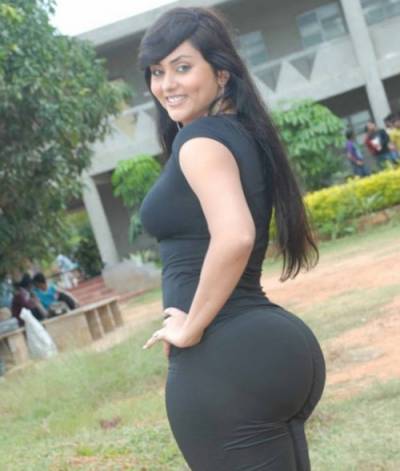China’s Tianhe-2 supercomputer, twice as fast as DoE’s Titan, shocks the world by arriving two years early
In a massive escalation of the supercomputing arms race, China has built Tianhe-2, a supercomputer capable of 33.86 petaflops — almost twice as fast as the US Department of Energy’s Titan, and topping the official Top 500 list of supercomputers by some margin. The US isn’t scheduled to build another large supercomputer until 2015, suggesting China will hold pole position for a long time to come. The computer has 32,000 Ivy Bridge Xeon CPUs and 48,000 Xeon Phi accelerator boards for a total of 3,120,000 computer cores, which are decked out with 1.4 petabytes of RAM. And of course the operating system is Linux.
The construction of Tianhe-2 (literally Milky Way-2) comes as a huge surprise, as it was originally scheduled for deployment in 2015. No one knows why China proceeded so quickly, but it’s fairly safe to assume that it’s a reaction to the DoE’s completion of Titan last year. Tianhe-2, which is currently being tested in a non-optimal space, is capable of 33.86 petaflops — when it’s deployed in its final location, however, and when any bugs have been ironed out, the theoretical peak performance will be 54.9 petaflops. Assuming that the US doesn’t accelerate its own supercomputing plans, the final form of Tianhe-2 will be almost four times faster than any other supercomputer in the world.
To achieve a theoretical peak of 54.9 petaflops, Tianhe-2 has a mind-bogglingly insane hardware spec. There are a total of 125 cabinets housing 16,000 compute nodes, each of which contains two Intel Xeon (Ivy Bridge) CPUs and three 57-core Intel Xeon Phi accelerator cards. Each compute node has a total of 88GB of RAM. In total, according to a report [PDF] by Jack Dongarra of the Oak Ridge National Laboratory, there are a total of 3,120,000 Intel cores and 1.404 petabytes of RAM, making Tianhe-2 by far the largest installation of Intel CPUs in the world. We believe it’s also the largest amount of RAM for a single system, too.
Beyond the glut of x86 computer capacity, though, Tianhe-2 is notable for another reason: Except for the CPUs, almost all of the other components were made in China. The front-end system, which manages the actual operation of all the computer nodes, consists of Galaxy FT-1500 processors — 16-core SPARC chips designed and built by China’s National University of Defense Technology (NUDT). The interconnect (pictured below), also designed and constructed by the NUDT, consists of 13 576-port optoelectronic switches that connect each of the computer nodes via a fat tree topology. The operating system, Kylin Linux, was also developed by NUDT.
Tianhe-2 is currently located at the NUDT while it undergoes testing, but will be fully deployed at the National Supercomputer Center in Guangzhou (NSCC-GZ) by the end of 2013. The peak power consumption for the processors, memory, and interconnect is 17.6 megawatts, with the water cooling system bringing that up to 24MW — slightly below the gigaflops-per-watt efficiency record set by the DoE/ORNL/Cray Titan supercomputer. When Tianhe-2 is complete, its primary purpose will be as an open research platform for researchers in southern China.
'They watched me in the bath via my laptop': How webcam hackers spy on women in their homes.
· English student Rachel Hyndman thought police would laugh at her;
· Called 'ratting', hackers can access computers via an internet virus.
Rachel Hyndman, from Glasgow, revealed how she was spied on by hackers while she was in the bath.
A university student has revealed how she was spied on by hackers while she was in the bath.
English student Rachel Hyndman was using her laptop to watch a DVD in her bathroom when she noticed her webcam suddenly turned itself on.
Miss Hyndman, 20, from Glasgow, said: 'I was in the bath, trying to relax, and then programs on my computer came on like a ghost was using it. I couldn't regain control of it.
'It was terrifying to think people had been looking at me without me knowing. I wondered how often they had done it without me realising. The thought someone had access to me in this private moment is horrifying.'
Miss Hyndman, who also works in a computer shop, said she considered going to the police but feared they would laugh at her.
Called 'ratting', hackers can send out an internet virus that allows them access to a person's desktop computer or laptop without their knowledge.
They can then switch on the webcam – built in to most new computers – and watch people in the privacy of their living rooms and bedrooms without them realising they are being closely observed.
A webcam is a video camera that feeds images in 'real time' to another computer, computer network or the internet.
A BBC Radio 5 Live investigation found the illegal practice is now so prevalent there is even a profitable underground market selling the ability to watch victims, who are dubbed 'slaves', for a few pounds.
More worryingly, paedophiles are using the technique to target youngsters – mainly girls – who have computers in their bedrooms.
The technique works by fooling the victim into downloading a piece of software on to their computer.
This is usually done by sending an email requesting the user to click the link to see a picture or listen to a song. Teenagers have been targeted through internet links advertising diet tips or celebrity stories.
Once installed, the 'remote administration tool' (RAT) software allows hackers to take control of the machine at any time – similar to how IT workers fix office computers remotely.
Hackers can then use a victim's home computers as if sitting at it – doing everything from switching on the webcam to looking through personal files on the hard drive.
A 16-year-old from London called 'John' told investigators he had hacked more than 100 computers – using the webcams to view the victims on about half of them.
He said: 'I wasn't really looking for anything, just their reactions. I'd open random sites [while the person sat at their computer] – shock sites – they'd see a scary picture or someone screaming, and you'd see they were scared. There are creepy people who post pictures of female slaves. I'm not really into that.'

Called 'ratting', hackers can send out an internet virus that allows them access to a person's desktop computer or laptop without their knowledge.
He added: 'Yeah, it is illegal. But the risk of getting caught isn't that much. It's just a bit of a laugh.' Matthew Anderson, 36, was jailed for 18 months after he was found guilty of infecting more than 200,000 computers with a virus that allowed their webcams to be hacked.
The father-of-five, from Banffshire, Scotland, had watched dozens of women in their own homes, including girls as young as 16. He boasted to fellow international hackers he watched a teenager and her sister for hours and lamented how she had not got naked in front of him.
Tony Neate, of the Government's Get Safe Online campaign, said: 'As more cases of “ratting” come to light, there is a serious need to educate the public about the methods hackers use to access the private lives of innocent people.'
There is a range of ways to prevent being spied on, experts said. Covering the webcam with a piece of paper and installing anti-virus software will prevent most hacking attempts and delete RATs.
Mr Neate said: 'The most at-risk computers are those running older software, and those without up-to-date anti-virus software installed.'
The Association of Chief Police Officers said: 'Police have come across webcam hacking through cyber investigations. Any unauthorised intrusion into an individual's computer is an offence under the Computer Misuse Act.'





